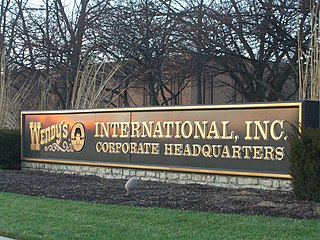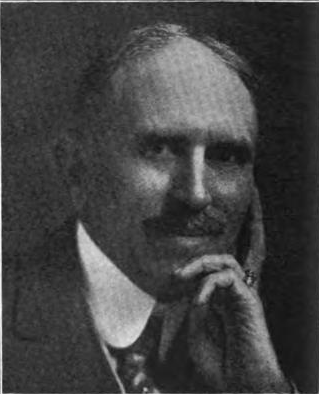Related Research Articles
An initial public offering (IPO) or stock launch is a public offering in which shares of a company are sold to institutional investors and usually also to retail (individual) investors. An IPO is typically underwritten by one or more investment banks, who also arrange for the shares to be listed on one or more stock exchanges. Through this process, colloquially known as floating, or going public, a privately held company is transformed into a public company. Initial public offerings can be used to raise new equity capital for companies, to monetize the investments of private shareholders such as company founders or private equity investors, and to enable easy trading of existing holdings or future capital raising by becoming publicly traded.

Morgan Stanley is an American multinational investment bank and financial services company headquartered at 1585 Broadway in Midtown Manhattan, New York City. With offices in 41 countries and more than 75,000 employees, the firm's clients include corporations, governments, institutions, and individuals. Morgan Stanley ranked No. 61 in the 2023 Fortune 500 list of the largest United States corporations by total revenue and in the same year ranked #30 in Forbes Global 2000.
EF Hutton was an American stock brokerage firm founded in 1904 by Edward Francis Hutton and his brother, Franklyn Laws Hutton. Later, it was led by well known Wall Street trader Gerald M. Loeb. Under their leadership, EF Hutton became one of the most respected financial firms in the United States and for several decades was the second largest brokerage firm in the country.

M&T Bank Corporation is an American bank holding company headquartered in Buffalo, New York. It operates 1,000+ branches in 12 states across the Eastern United States, from Maine to Northern Virginia. Until May 1998, the bank's holding company was named First Empire State Corporation.
Allied Corp. was a major American company with operations in the chemical, aerospace, automotive, oil and gas industries. It was initially formed in 1920 as the Allied Chemical and Dye Corporation as an amalgamation of five chemical companies. In 1958, it was renamed Allied Chemical Corporation when it diversified into oil and gas exploration. Allied Chemical then became Allied Corporation in 1981. In 1985, Allied merged with the Signal Companies to become AlliedSignal. AlliedSignal would eventually acquire Honeywell in 1999 and then adopt its name.
Jefferies Group LLC is an American multinational independent investment bank and financial services company that is headquartered in New York City. The firm provides clients with capital markets and financial advisory services, institutional brokerage, securities research, and asset management. This includes mergers and acquisitions, restructuring, and other financial advisory services. The Capital Markets segment also includes its securities trading and investment banking activities.
Lee, Higginson & Co. was a Boston-based investment bank established in 1848 that was the home of many members of the Boston Brahmin establishment. The bank collapsed in the Swedish match scandal in 1932 while under the leadership of Jerome Davis Greene. The bank helped finance the growth of General Motors during the nascent phase of the American automobile industry.

Stocks consist of all the shares by which ownership of a corporation or company is divided. A single share of the stock means fractional ownership of the corporation in proportion to the total number of shares. This typically entitles the shareholder (stockholder) to that fraction of the company's earnings, proceeds from liquidation of assets, or voting power, often dividing these up in proportion to the amount of money each stockholder has invested. Not all stock is necessarily equal, as certain classes of stock may be issued, for example, without voting rights, with enhanced voting rights, or with a certain priority to receive profits or liquidation proceeds before or after other classes of shareholders.

The Wendy's Company is an American holding company for the major fast food chain Wendy's. Its headquarters are in Dublin, Ohio. The company's principal subsidiary, Wendy's International, is the franchisor of Wendy's restaurants.

China International Capital Corporation Limited is a Chinese partially state-owned multinational investment management and financial services company. Founded in China in 1995, CICC provides investment banking, securities and investment management services to corporations, institutions and individuals worldwide.
Crescent is a brand of hand tools. It originated with the Crescent Tool Company, founded in 1907. The Crescent brand has changed ownership multiple times. It is currently owned by Apex Tool Group, LLC of Sparks, Maryland as part of its Hand Tools division. It is best known for its style of adjustable wrench.
Niagara Falls Hydraulic Power & Manufacturing Company was an American company, based in Niagara Falls, New York that was the first company to generate hydroelectric power from Niagara Falls in 1882. The company built upon several predecessor companies efforts to construct a canal used for hydraulic mill power. In 1918, the company merged with Niagara Falls Power Company, which later became Niagara Mohawk and in 2002 was acquired by National Grid plc.

Dominick and Dickerman LLC is an investment and merchant banking firm headquartered in New York City. It also has offices in Basel, Switzerland. From 1899 to 2015, the firm was known as Dominick and Dominick but after selling off its wealth management business, the firm reverted to its original name, Dominick and Dickerman.

Frank Alonzo Dudley was an American lawyer, politician, hotelier and business owner associated with Niagara Falls, New York. Dudley established the United Hotels Company of America and the "Lewiston Heights" neighborhood in Lewiston, New York.

Jacob Friedrich Schoellkopf was a pioneer in harnessing the hydroelectric power of Niagara Falls.

Arthur Schoellkopf was an American industrial leader who helped develop the hydroelectric resources of Niagara Falls and served as the fifth Mayor of Niagara Falls, New York.

Jacob Friedrich Schoellkopf Jr. was an American business executive, founder of Schoellkopf Aniline and Chemical Works, and member of the Schoellkopf family who were involved in hydroelectric resources at Niagara Falls.

Paul Arthur Schoellkopf was an American industrialist and the third generation of Schoellkopfs to manage the hydroelectric power plants of Niagara Falls. Schoellkopf served as chairman of the Buffalo Niagara Electric Corporation and was a trustee of Cornell University.
Horace Burton Pomeroy was an American broker and investment banker with Schoellkopf, Hutton & Pomeroy.
W. E. Hutton & Co. was an American investment bank that became a powerhouse Wall Street stock brokerage. It was founded in Ohio in 1887 and was absorbed by Thomson & McKinnon Auchincloss Kohlmeyer, Inc., another investment bank. in 1974.
References
- Notes
- ↑ Niagara Share Corporation was organized on May 6, 1925 under the laws of Delaware as a holding company for the Schoellkopf family utility interests. In 1929, Niagara Share Corporation of Maryland was organized further to consolidate the Schoellkopf family interest, and succeeded substantially to the holdings of the original Niagara Share Corporation. [3]
- Sources
- ↑ TIMES, Special to THE NEW YORK (23 March 1947). "RUSSELL J.H. MUTTON; Board Chairman of Investment Brokerage Firm in Buffalo". The New York Times . Retrieved 15 October 2021.
- ↑ Pomeroy, Albert Alonzo (1922). History and Genealogy of the Pomeroy Family: Colateral Lines in Family Groups, Normandy, Great Britain and America; Comprising the Ancestors and Descendants of Eltweed Pomeroy from Beaminster, County Dorset, England, 1630. Franklin printing and engraving Company. Retrieved 14 October 2021.
- 1 2 Commission, United States Securities and Exchange. Investment Trusts and Investment Companies: Report Pursuant to Section 30 of the Public Utility Holding Company Act of 1935. U.S. Government Printing Office. p. 2613. Retrieved 14 October 2021.
- ↑ "BANKING FIRM OUT OF NIAGARA SHARE; Schoellkopf, Hutton & Pomeroy to Get Status Independent of Parent Company". The New York Times . 29 October 1935. Retrieved 14 October 2021.
- ↑ "NET $113,376 IN QUARTER.; Schoellkopf, Hutton & Pomeroy of Buffalo Issue Report". The New York Times . 2 February 1936. Retrieved 14 October 2021.
- ↑ "INVESTMENT BANKING FIRM; Schoellkopf, Hutton & Pomeroy, Inc., Report for Last Year". The New York Times . 23 January 1938. Retrieved 14 October 2021.
- ↑ "SEC SIFTS $9,700,000 IN 'GOOD-WILL' ITEM; Hearing on Niagara Share and Schoellkopf, Hutton & Pomeroy Turns Into a Row". The New York Times . 12 January 1938. Retrieved 14 October 2021.
- ↑ "Heads Schoellkopf Firm". The New York Times . 10 October 1942. Retrieved 14 October 2021.
- ↑ "Schoellkopf Named Chairman". The New York Times . 22 August 1950. Retrieved 14 October 2021.
- 1 2 "Schoellkopf, Hutton & Pomeroy To Merge With Dominick Firm". The New York Times . 19 February 1960. Retrieved 14 October 2021.
- 1 2 "Schoellkopf Cousins Continue Upstate Success Story; TWO COUSINS ADD TO SUCCESS STORY". The New York Times . 16 February 1961. Retrieved 14 October 2021.
- ↑ "Offer Is Extended". The New York Times . 27 October 1968. Retrieved 14 October 2021.
- ↑ Commission, United States Securities and Exchange (1968). News Digest. Securities and Exchange Commission. Retrieved 14 October 2021.